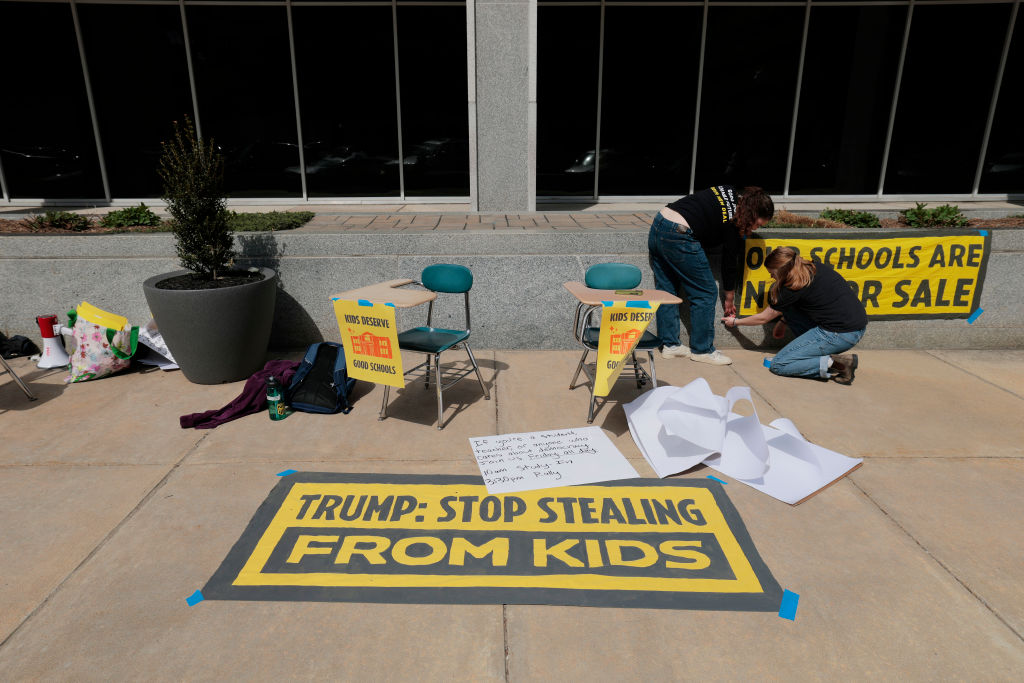President Donald Trump issued a long-expected executive order Thursday to abolish the Department of Education, following through on a campaign promise and a long-time right-wing goal. Although it is unlikely that the president can unilaterally abolish the department outright, he can continue to make changes that undermine or eliminate the department’s staff and programs and significantly change how the agency operates, with potentially massive impacts for millions of students and education professionals across the country.
Trump moves to close Department of Education, Congressional Black Caucus reacts
Trump issued an executive order Thursday titled “Improving Education Outcomes by Empowering Parents, States, and Communities,” which announced that “the Secretary of Education shall, to the maximum extent appropriate and permitted by law, take all necessary steps to facilitate the closure of the Department of Education and return authority over education to the States and local communities.” Criticizing the department’s performance since its creation by Congress under President Jimmy Carter, the order claims that it will dismantle the department while still “ensuring the effective and uninterrupted delivery of services, programs, and benefits on which Americans rely.”

While many conservatives have long pushed for this move, other lawmakers, experts and advocates worry about the damage that could be done by the potential closure of the Department of Education. The Congressional Black Caucus reacted to the executive order in a statement; its chairwoman, Rep. Yvette Clarke, D-N.Y., characterized the order as the latest move by Trump and DOGE head Elon Musk to “rampage against career civil servants and institutions that faithfully serve the needs of the American people,” adding that “President Trump’s executive order will lessen the department’s resources and put pressure on already overburdened school systems.” Clarke also pointed out that the Department of Education has played a key role in desegregating and promoting equality within schools and said that “President Trump’s executive actions to further dismantle the Department of Education will make our schools more segregated and unequal.”
What can Trump do to limit or change the Department of Education?
Trump does not have the constitutional authority to close the Department of Education, which must be done through an act of Congress, and legislation proposed by Republicans to abolish the department has so far not gained much traction. However, even without abolishing the department, Trump has already laid off nearly half of the department’s staff, cut off a number of its grants, and eliminated entire programs such as the agency’s diversity, equity and inclusion efforts. Although states and local governments provide 90% of education funding in the United States, the federal government provides billions of dollars for education to students in low-income areas and students with disabilities or special needs, as well as administers the $1.6 trillion student loan program.
While the administration has claimed that these programs will not be impacted by Trump’s order, it is unclear how the programs will continue to function with a closed or depleted Department of Education. It is also likely that Trump will attempt to implement policies favored by conservatives and right-wing groups like the Heritage Foundation, which authored the “Project 2025” plan that is largely being implemented by Trump. In terms of education, these conservative goals may see the Trump administration attempt to redirect federal education spending to block grants to states, without stipulations on how states spend the money, and to private schools via vouchers and other “school choice” programs.
Given the moves made by Trump, Musk and others against government agencies like USAID, it seems that they will do everything in their power to close the Department of Education, with or without the legal authority to do so. Even if the administration cannot fully eliminate the agency, it seems set to radically alter the way it operates around the country, with education professionals and vulnerable students bearing the brunt of these changes.
